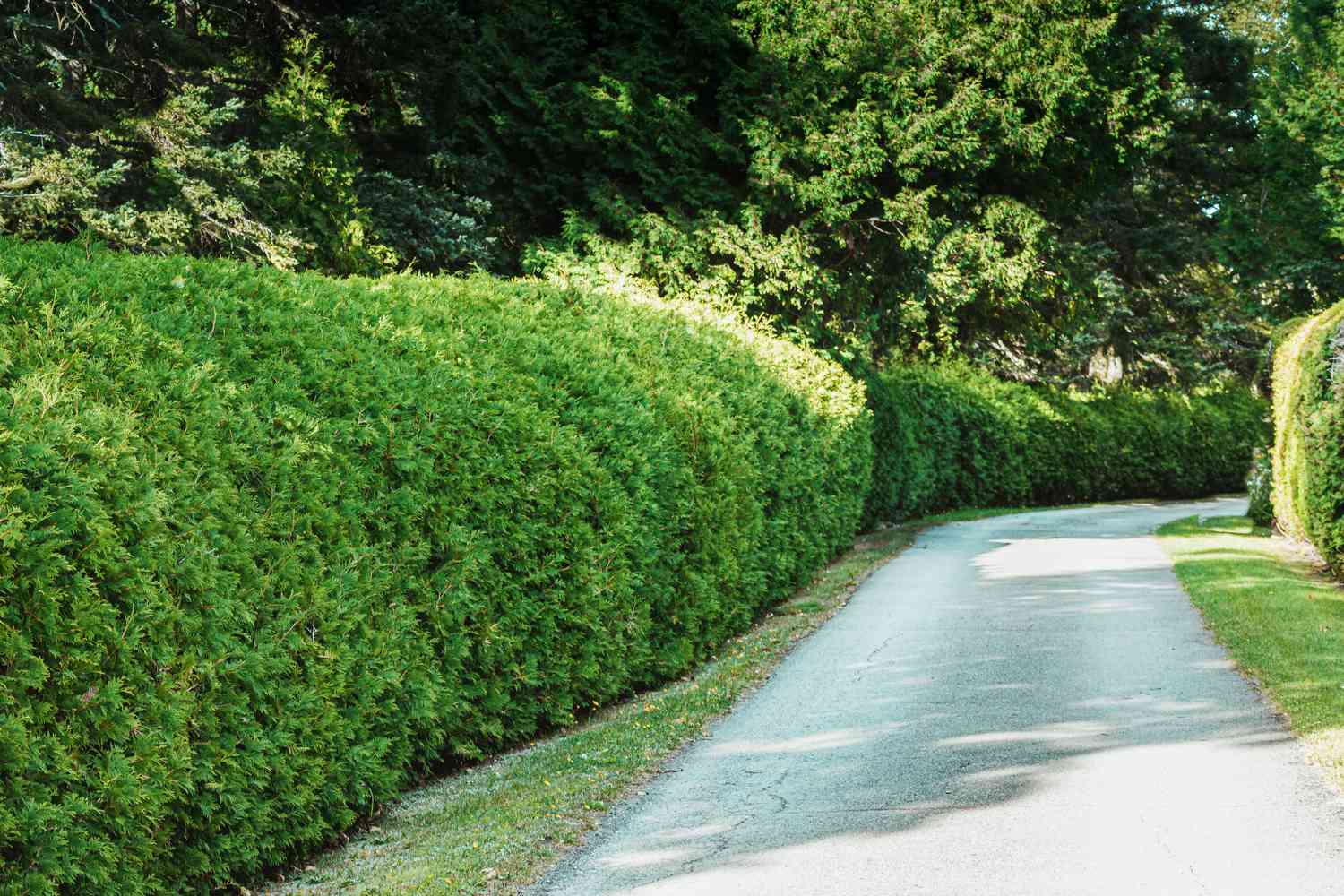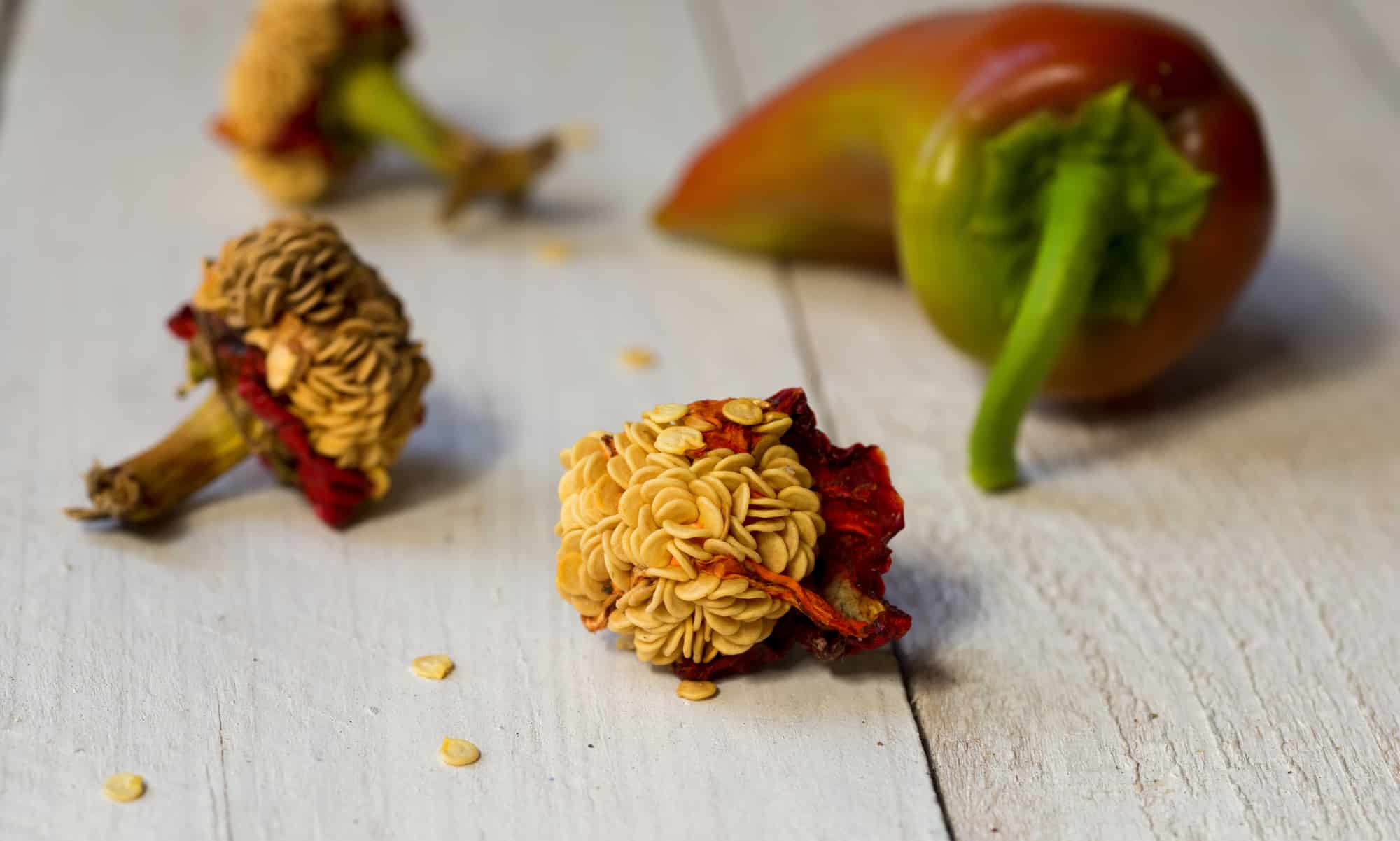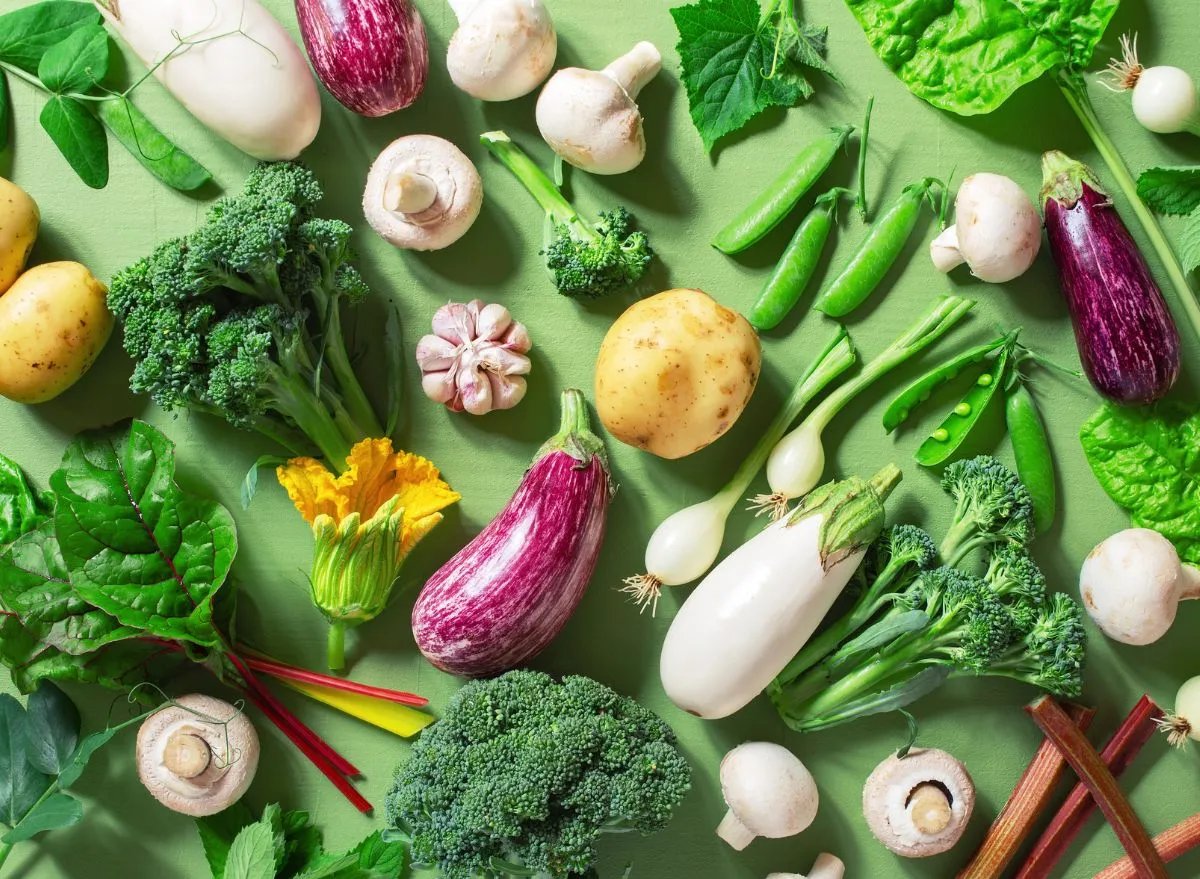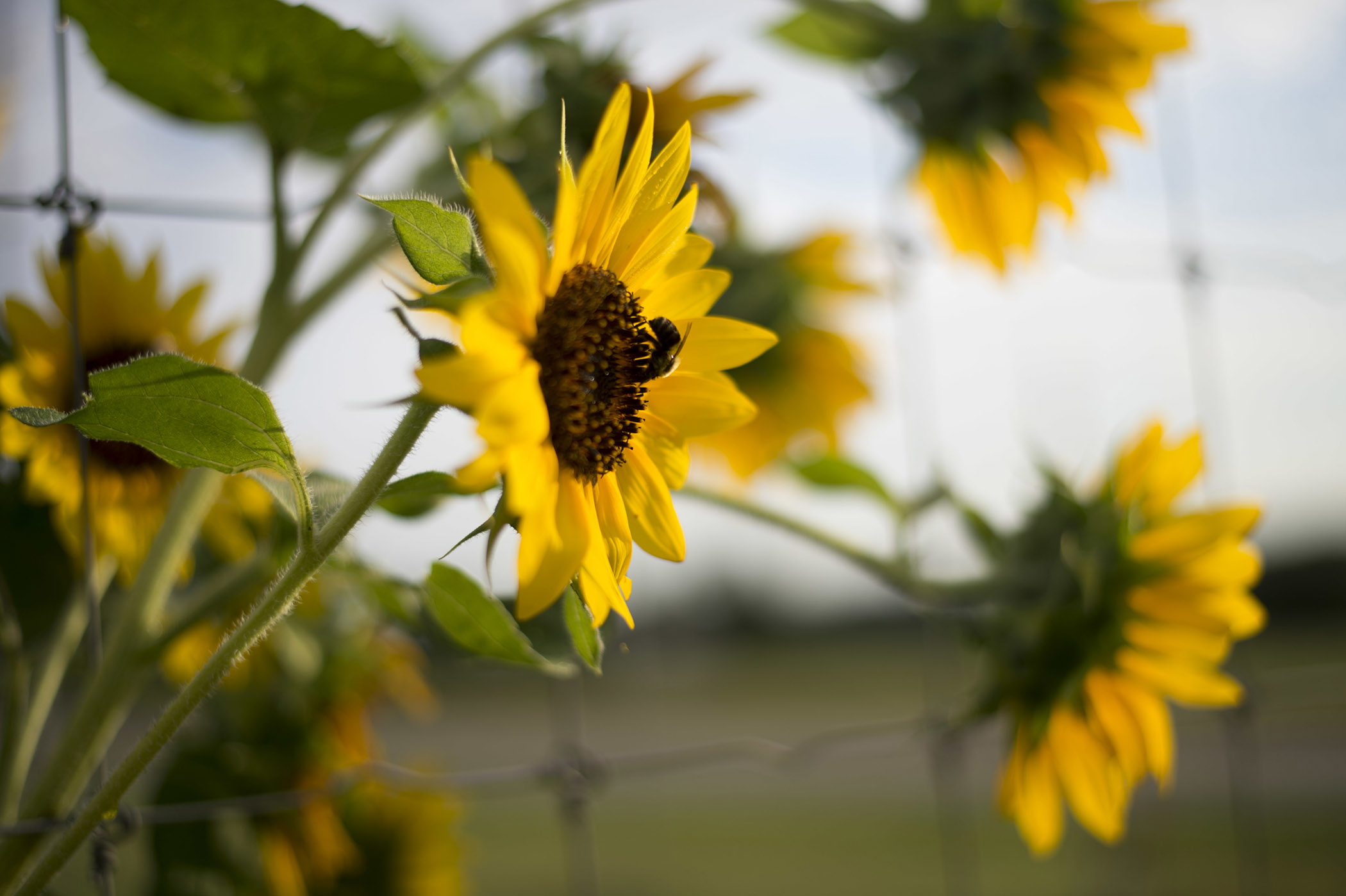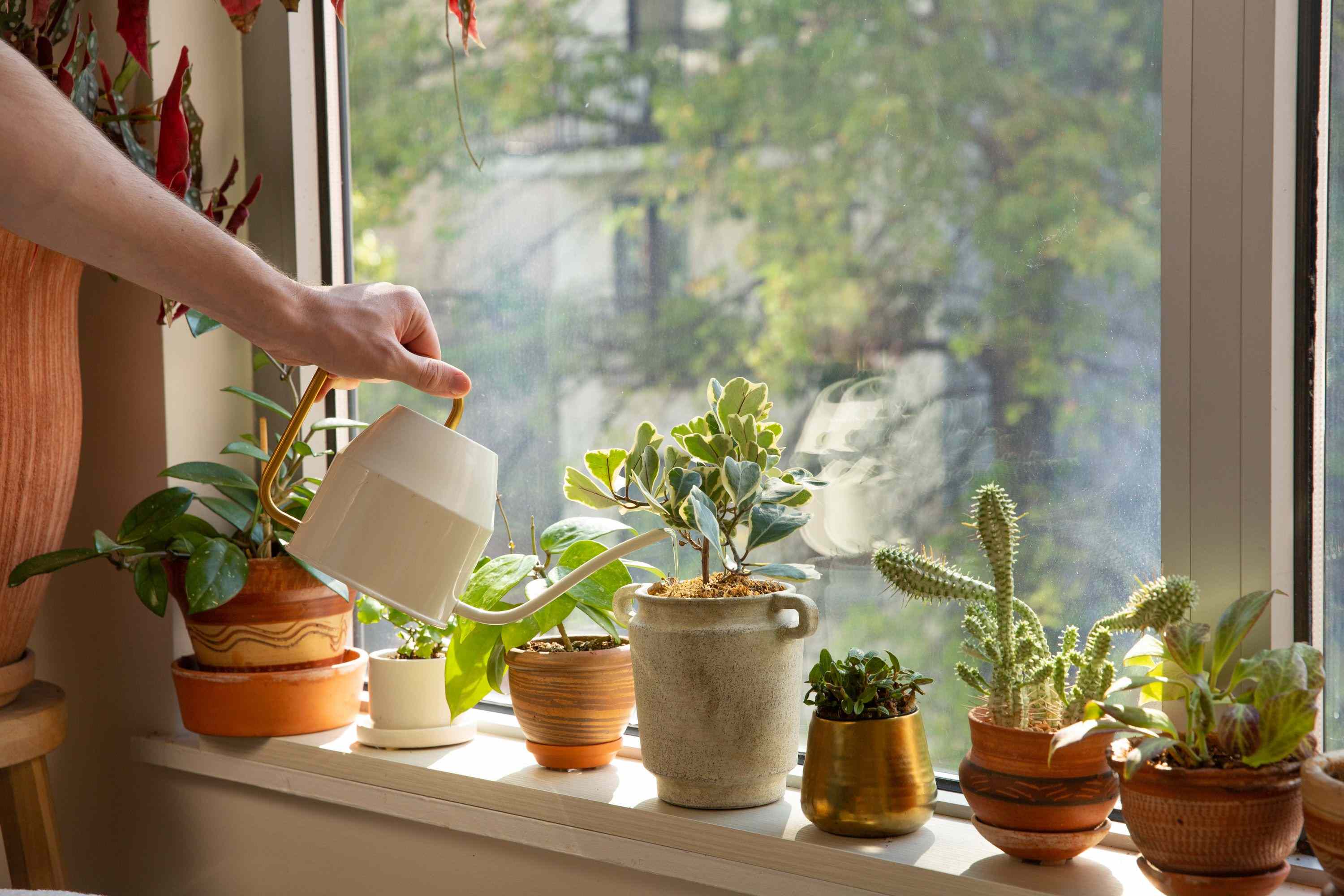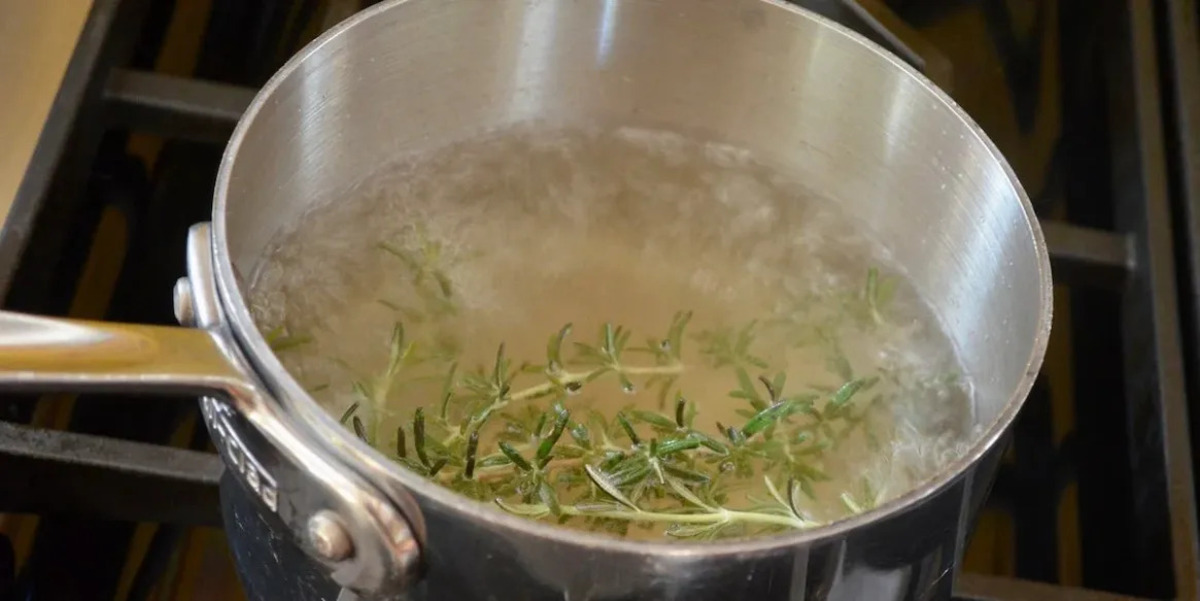Home>Garden Design>Planning Your Garden>Which Shrubs Should I Plant


Planning Your Garden
Which Shrubs Should I Plant
Modified: February 6, 2024
Discover the best shrubs to plant in your garden with our comprehensive guide. From planning to planting, we have you covered. Find out more now!
(Many of the links in this article redirect to a specific reviewed product. Your purchase of these products through affiliate links helps to generate commission for Chicagolandgardening.com, at no extra cost. Learn more)
Table of Contents
Introduction
Welcome to the exciting world of gardening! Planning and designing your garden can be a fulfilling and enjoyable experience. One aspect of garden planning that requires careful consideration is selecting the right shrubs. Shrubs not only add structure and beauty to your garden but also provide privacy, shade, and attract pollinators. With a wide variety of shrubs available, it can be overwhelming to make the right choices for your garden. But fear not, as we are here to guide you through the process.
When choosing shrubs for your garden, there are several factors to consider. Sun exposure, soil type, space availability, and maintenance requirements should all be taken into account. Additionally, you may have specific preferences, such as evergreen shrubs for year-round color or native shrubs to support local ecosystems.
In this article, we will explore different types of shrubs suitable for various garden situations. Whether you have a sunny or shady garden, desire privacy screening, or want shrubs that offer beautiful flowers or fall foliage, we have got you covered. We will also highlight low-maintenance options for those who prefer a hands-off approach.
Remember, gardening is a personal journey, and there are no hard and fast rules. The key is to choose shrubs that align with your vision, suit your garden’s conditions, and bring you joy. By making thoughtful decisions and planning ahead, you can create a garden that not only looks stunning but also thrives for years to come.
Factors to Consider When Choosing Shrubs
Before diving into the world of shrub selection, it’s crucial to consider a few key factors. Taking these factors into account will ensure that you choose the right shrubs for your garden’s unique conditions and your personal preferences.
Sun Exposure: One of the most critical factors in choosing shrubs is sun exposure. Some shrubs thrive in full sun, while others prefer partial shade or full shade. Determine how much sunlight your garden receives throughout the day and select shrubs that are suitable for that level of sun exposure.
Soil Type: Different shrubs thrive in different soil types. Some prefer well-drained soil, while others can tolerate clay or sandy soil. Understanding your soil type will help you select shrubs that will thrive in your garden’s conditions. Consider conducting a soil test to determine the pH level and nutrient content of your soil.
Space Availability: Consider the available space in your garden when choosing shrubs. Some shrubs grow tall and wide, while others stay compact. Make sure to choose shrubs that will fit within the available space and won’t overcrowd your garden.
Maintenance Requirements: Assess your willingness and ability to maintain your shrubs. Some shrubs require regular pruning and shaping, while others are low-maintenance. Consider your time and energy availability when choosing shrubs to avoid choosing ones that will become burdensome to care for.
Personal Preferences: Your personal taste and preferences play a significant role in selecting shrubs. Consider what appeals to you visually, such as foliage color, flower type, or fragrance. Think about the overall style of your garden and choose shrubs that complement it.
Climate Suitability: Take into account your local climate when choosing shrubs. Some shrubs are more suited to specific climates and may not survive extreme temperatures or climate conditions. Research shrubs that are known to thrive in your region and choose accordingly.
By considering these factors, you can narrow down your options and choose shrubs that are well-suited to your garden’s unique conditions and your personal preferences. With a little bit of planning and research, you can create a beautiful and harmonious garden with the perfect selection of shrubs.
Shrubs for Sun Exposure
Sun-loving shrubs thrive in full sunlight, typically requiring at least six hours of direct sunlight per day. These shrubs are excellent choices for gardens that receive ample sunlight and add vibrancy and structure to the landscape.
Rose of Sharon: Known for its stunning blooms, the Rose of Sharon (Hibiscus syriacus) is a popular shrub for sunny gardens. It produces large, colorful flowers in various shades of pink, purple, and white during the summer months. Rose of Sharon is also known for attracting pollinators like butterflies and hummingbirds.
Butterfly Bush: Aptly named, the Butterfly Bush (Buddleja davidii) is a magnet for butterflies and other beneficial insects. This shrub features long clusters of colorful flowers that bloom from summer to fall. Butterfly Bush comes in a range of colors, including purple, pink, white, and yellow, providing a burst of color to your garden.
Lilac: Lilacs (Syringa) are classic shrubs known for their delightful fragrance and exquisite clusters of flowers. They come in various shades of purple, pink, and white. Lilacs prefer full sun and can be pruned to maintain their shape and size. They are not only visually pleasing but also attract pollinators like bees and butterflies.
Rhododendron: Rhododendrons are evergreen shrubs that produce stunning, showy flowers in shades of pink, purple, red, and white. These shrubs thrive in acidic soil and need protection from harsh afternoon sun in hotter climates. Rhododendrons are perfect for creating a stunning focal point in your garden with their large, glossy leaves and vibrant blooms.
Smoke Bush: The Smoke Bush (Cotinus coggygria) is known for its unique, wispy cloud-like blooms that resemble puffs of smoke. This shrub offers a stunning contrast to other plants in the garden and can be a real showstopper. Smoke Bush prefers full sun and can tolerate a range of soil types.
Juniper: Junipers are a popular choice for sunny, dry gardens as they are drought-tolerant and low-maintenance. These evergreen shrubs come in various shapes and sizes, from small groundcover varieties to tall, upright forms. Junipers provide year-round interest with their blue-green foliage and are excellent for adding structure to the garden.
These are just a few examples of sun-loving shrubs that can thrive in full sunlight. When selecting shrubs for sun exposure, consider their specific sunlight requirements, growth habits, and the visual impact they will have on your garden. By choosing the right shrubs, you can create a sun-filled paradise that will delight you and attract various pollinators.
Shrubs for Shade Exposure
If your garden is blessed with shade for a significant part of the day, don’t fret! There are plenty of shrubs that thrive in shady conditions and can add beauty and appeal to your garden. Whether you have dappled shade or deep shade, there are shrubs that will flourish in these lower light conditions.
Azalea: Azaleas are a popular choice for shady gardens due to their beautiful blooms and shade tolerance. These shrubs produce clusters of colorful flowers in shades of pink, purple, white, and red. Azaleas prefer partial shade and well-drained, acidic soil. They can create a stunning display under trees or in shaded areas of the garden.
Ferns: Ferns are an excellent choice for adding texture and lushness to shady corners of the garden. These non-flowering plants thrive in moist, shady conditions and come in various shapes, sizes, and shades of green. Japanese Painted Ferns and Ostrich Ferns are popular choices that add elegance and drama to the shaded areas.
Hosta: Hostas are known for their attractive foliage and shade tolerance, making them perfect for shaded gardens. These perennial shrubs come in a wide variety of leaf shapes, sizes, and colors, ranging from bright greens to blues, yellows, and variegated patterns. Hostas are low-maintenance and thrive in moist, well-drained soil.
Japanese Pieris: Japanese Pieris (Pieris japonica) is an evergreen shrub known for its vibrant spring foliage and drooping clusters of bell-shaped flowers. It prefers partial shade and acidic, well-drained soil. Japanese Pieris adds a touch of elegance and color with its red, pink, or white blooms.
Hydrangea: Hydrangeas are versatile shrubs that can thrive in both sun and shade, depending on the variety. Some hydrangeas, such as the Bigleaf Hydrangea (Hydrangea macrophylla), prefer partial shade and produce large, showy blooms in shades of pink, blue, or white. Endless Summer and Annabelle hydrangea varieties are known for their shade tolerance.
Fothergilla: Fothergilla is an underappreciated shrub that thrives in partial shade. It offers unique bottlebrush-like flowers in spring and vibrant fall foliage in shades of orange, yellow, and red. Fothergilla prefers well-drained soil and can add a pop of color to shaded areas of the garden.
These are just a few examples of shrubs that can thrive in shade. When selecting shrubs for shade exposure, consider the specific light requirements of the plant, the moisture levels of your garden, and the overall aesthetic you want to achieve. By choosing shade-loving shrubs, you can create a captivating and enchanting garden in even the shadiest of spots.
Evergreen Shrubs
Evergreen shrubs are a great addition to any garden as they provide year-round interest and maintain their foliage throughout the seasons. These shrubs keep your garden vibrant, even during the winter months when other plants may go dormant. Whether you’re looking for privacy screening, all-season color, or structural elements, evergreen shrubs have you covered.
Boxwood: Boxwood (Buxus) is a classic evergreen shrub known for its dense, compact growth and versatility. It can be pruned into various shapes and sizes, making it an excellent choice for hedges, topiaries, or formal garden settings. Boxwood comes in different varieties, offering a range of leaf shapes and sizes.
Yew: Yew (Taxus) is another popular choice for evergreen shrubs. These shrubs are known for their dark green, needle-like foliage and ability to tolerate heavy pruning. Yews can be shaped into hedges, privacy screens, or even focal points in the garden. Just be cautious, as the berries produced by some yews are toxic if ingested.
Holly: Holly (Ilex) is an evergreen shrub that adds beauty and festive cheer to the garden. With its spiky, glossy leaves and vibrant red berries, holly is favored for both its visual appeal and ability to attract birds during the winter. There are various sizes and varieties of holly available, offering different leaf shapes and berry colors.
Arborvitae: Arborvitae (Thuja) is a popular choice for creating privacy screens and windbreaks. These tall, narrow evergreen shrubs have dense foliage that provides year-round coverage. Arborvitae varieties come in different heights and colors, allowing you to select the perfect ones to suit your needs.
Juniper: Juniper (Juniperus) is a versatile evergreen shrub that comes in various shapes, sizes, colors, and growth habits. From trailing varieties that provide groundcover to tall, upright forms that make great focal points, junipers offer a range of landscaping options. They are low-maintenance and can thrive in various soil conditions.
Leatherleaf Mahonia: Leatherleaf Mahonia (Mahonia bealei) is an evergreen shrub that adds a unique touch to gardens with its spiky, holly-like foliage and fragrant yellow flowers. It thrives in partial shade and well-drained soil. Leatherleaf Mahonia is an excellent choice for shaded areas or mixed borders where its architectural appeal can be highlighted.
These are just a few examples of evergreen shrubs that offer a range of benefits, from privacy screening to year-round color. When selecting evergreen shrubs for your garden, consider the specific needs of the plant, its growth habit, and how it will contribute to the overall aesthetics of your landscape. With these evergreen beauties, your garden will stay vibrant and appealing no matter the time of year.
Flowering Shrubs
Flowering shrubs add a burst of color and beauty to any garden, creating a vibrant and eye-catching display. These shrubs not only provide visual interest but also attract pollinators like butterflies and bees, adding life and activity to your outdoor space. Whether you prefer delicate blossoms or bold and showy flowers, there are a plethora of flowering shrubs to choose from to suit your taste.
Rhododendron: Rhododendrons are renowned for their stunning clusters of vibrant flowers in various shades of pink, purple, red, and white. These shrubs typically bloom in spring and add a pop of color to the garden. Choose from different varieties, each with its unique flower shape and size.
Azalea: Azaleas are a popular choice for their colorful blooms that come in shades of pink, purple, red, white, and even bi-colored combinations. These shrubs provide a stunning display in spring and often have a pleasant fragrance. Some varieties are also known for their fall foliage, adding another layer of interest.
Lilac: Lilacs are beloved for their intoxicating fragrance and gorgeous clusters of flowers. They typically bloom in spring, showcasing a range of shades from light purple to deep magenta. Lilacs are often associated with nostalgia and are an excellent choice for adding elegance and romance to your garden.
Hydrangea: Hydrangeas offer a diverse range of flower types, including mopheads, lacecaps, and panicles. These shrubs come in various colors, including pink, blue, white, and even green. Hydrangeas can bloom from spring through fall, and some varieties even change color based on soil pH.
Forsythia: Forsythias are early bloomers, often producing vibrant yellow flowers that appear before the leaves emerge in early spring. These shrubs are a welcoming sight after a long winter, signaling the start of warmer weather. Forsythias are excellent for creating striking hedges or focal points in the garden.
Rose: Roses are timeless favorites that bring elegance and romance to any garden. From classic hybrid teas to climbing roses, there is a wide range of varieties to choose from. Roses offer a stunning array of colors and fragrances, making them a perfect choice for adding beauty and sophistication to your outdoor space.
These are just a few examples of flowering shrubs that can bring vibrant colors and visual interest to your garden. When selecting flowering shrubs, consider their blooming time, maintenance requirements, and how they will complement the overall design of your landscape. With these stunning beauties, your garden will become a blooming oasis of color and fragrance.
Shrubs with Fall Foliage
Shrubs with captivating fall foliage can transform your garden into a breathtaking display of color during the autumn months. These shrubs offer a stunning range of hues, from fiery reds and oranges to rich golds and purples. Incorporating shrubs with fall foliage adds warmth and beauty to your outdoor space, creating a visual spectacle that celebrates the changing of seasons.
Japanese Maple: Japanese Maple (Acer palmatum) is renowned for its vibrant and dramatic fall foliage. With its delicate, lacy leaves, this small tree or large shrub showcases a stunning array of colors, including deep reds, oranges, and golden yellows. Japanese Maple adds elegance and a touch of grace to any autumn garden.
Burning Bush: The Burning Bush (Euonymus alatus) gets its name from its fiery red foliage that lights up the landscape in the fall. This deciduous shrub provides a stunning and vibrant display of color, making it a popular choice for autumn gardens. In addition, it features intriguing corky ridges on its branches, adding textural interest even during the winter months.
Beautyberry: Beautyberry (Callicarpa) is a shrub that puts on a show in the fall with its clusters of bright purple berries that last well into winter. The berries stand out against the shrub’s green foliage and create a striking contrast. Beautyberry is not only visually appealing but also attracts birds, adding another element of liveliness to your garden.
Eastern Ninebark: Eastern Ninebark (Physocarpus opulifolius) is a versatile shrub that offers not only beautiful fall foliage but also interesting bark. Its leaves turn shades of deep burgundy, purple, or gold in the fall, adding warmth and richness to the landscape. The peeling bark of older stems adds texture and visual interest to the winter garden as well.
Virginia Sweetspire: Virginia Sweetspire (Itea virginica) is a deciduous shrub that showcases stunning shades of red, orange, and burgundy in the fall. Its vibrant foliage provides a visual feast and can be even more striking when planted in mass groupings. Virginia Sweetspire also produces fragrant white flowers in the summer months, adding further interest to this versatile shrub.
Witch Hazel: Witch Hazel (Hamamelis) is a unique and charming shrub that delights with its fall foliage. The leaves turn shades of yellow, orange, and even scarlet, providing a vibrant show in the autumn. On top of its colorful foliage, Witch Hazel produces cheerful, spidery blooms in late winter or early spring, making it a double delight for gardeners.
These are just a few examples of shrubs that offer gorgeous fall foliage. When selecting shrubs for their autumn colors, consider the specific hues, growth habits, and maintenance requirements of each plant. By incorporating these leafy wonders, you can create a captivating tapestry of color in your garden, welcoming the autumn season with open arms.
Native Shrubs
Native shrubs are an excellent choice for any garden as they not only provide beauty and diversity but also support local ecosystems. These shrubs are adapted to the specific climate, soil, and wildlife of the region, making them resilient and low-maintenance choices. By incorporating native shrubs into your garden, you can create a sustainable and thriving landscape that promotes biodiversity and benefits local wildlife.
Serviceberry: Serviceberry (Amelanchier spp.) is a versatile native shrub that offers year-round interest. It produces delicate white flowers in spring, followed by tasty berries that attract birds and other wildlife. In the fall, its foliage turns a vibrant shade of orange or red, adding a splash of color to the garden.
Red Twig Dogwood: Red Twig Dogwood (Cornus sericea) is a beautiful native shrub that stands out in winter. Its brilliant red branches create a striking contrast against the snow-covered landscape. Red Twig Dogwood also produces clusters of white flowers in the spring and berries that provide food for birds.
Buttonbush: Buttonbush (Cephalanthus occidentalis) is a native shrub that thrives in wet conditions, making it ideal for rain gardens or areas with poor drainage. Its unique round clusters of white, spiky flowers attract butterflies, bees, and other pollinators. Buttonbush also provides habitat and food for birds.
Bayberry: Bayberry (Myrica spp.) is a native shrub that is known for its fragrant leaves and waxy blue-gray berries. These berries provide food for birds, and their wax has been historically used to make candles. Bayberry is also valuable for its ability to withstand sandy or coastal conditions.
Sumac: Sumac (Rhus spp.) is a native shrub that is well-suited to dry and sandy conditions. It produces clusters of red or purple berries that provide food for wildlife. Some sumac species also display beautiful fall foliage and can be effective in erosion control due to their deep root systems.
Viburnum: Viburnum is a diverse genus of native shrubs that offers various species to choose from. Viburnum shrubs provide attractive flowers, berries, and foliage throughout the seasons. They are also beneficial to wildlife, attracting birds and butterflies with their nectar-rich flowers and nutritious berries.
When selecting native shrubs for your garden, consider the specific requirements of each plant and how it can support the local ecosystem. Native shrubs not only add beauty and interest to your garden but also contribute to the overall health and sustainability of the environment. By choosing native plants, you can make a positive impact on your local ecosystem, supporting the natural balance of flora and fauna.
Low-Maintenance Shrubs
If you’re looking for shrubs that require minimal care and attention, low-maintenance shrubs are the perfect choice. These shrubs are ideal for gardeners who have limited time or prefer a more hands-off approach to gardening. With their ability to thrive with minimal pruning, fertilizing, and watering, low-maintenance shrubs allow you to enjoy a beautiful garden while reducing the amount of time and effort required for maintenance.
Spirea: Spirea (Spiraea) is a popular choice for low-maintenance shrubs. With its small, cascading flowers and delicate foliage, it adds beauty and texture to the garden. Spirea varieties are known for their ability to withstand a range of soil conditions and require minimal pruning. They also attract pollinators, making them beneficial to local ecosystems.
Barberry: Barberry (Berberis) is a hardy shrub that is incredibly low-maintenance. It tolerates a wide range of soil types and is drought-tolerant once established. Barberry comes in various colors and sizes, offering options for every garden. Its thorny branches also serve as a deterrent for unwanted wildlife, adding an extra layer of protection to your garden.
Smoke Bush: Smoke Bush (Cotinus coggygria) is a low-maintenance shrub that requires little attention to thrive. With its unique, wispy blooms that resemble puffs of smoke, it adds a touch of drama and intrigue to the garden. Smoke Bush is drought-tolerant and can tolerate a variety of soil conditions, making it a hassle-free choice for any gardener.
Forsythia: Forsythia is an easy-to-grow shrub that bursts into a beautiful display of bright yellow flowers in early spring. It requires minimal pruning and upkeep, making it a low-maintenance option. Forsythia adds a pop of color to your garden while being tolerant of various soil types and conditions.
Spiral Juniper: Spiral Juniper (Juniperus chinensis) is a unique and low-maintenance shrub that adds a touch of elegance to any landscape. Its compact, spiral-shaped foliage requires minimal pruning to maintain its shape and size. Spiral Juniper is also drought-tolerant and can adapt to a range of soil conditions.
Yucca: Yucca is a tough and resilient shrub that thrives in arid conditions and requires little care. Its sword-like leaves and striking blooms add architectural interest to the garden. Yucca is drought-tolerant and can tolerate poor soil, making it an excellent choice for low-maintenance landscaping.
When selecting low-maintenance shrubs, consider the specific needs of each plant, such as its preferred growing conditions and hardiness in your region. Before planting, ensure that the chosen shrub is suitable for your climate and garden conditions. With these low-maintenance beauties, you can spend less time maintaining your garden and more time enjoying its beauty.
Shrubs for Privacy Screening
If you desire privacy in your outdoor space, incorporating shrubs specifically suited for privacy screening is an excellent solution. These shrubs are dense, tall, and often evergreen, providing year-round coverage and acting as a natural barrier to create a secluded and intimate atmosphere in your garden. Whether you have nosy neighbors, want to block unsightly views, or simply create a sense of privacy, there are several shrubs that are perfect for the job.
Arborvitae: Arborvitae (Thuja) is a popular choice for privacy screening due to its dense foliage and tall, upright growth habit. These evergreen shrubs come in various sizes, allowing you to select the perfect height for your desired level of privacy. Arborvitae is typically low-maintenance and can withstand various weather conditions.
Holly: Holly (Ilex) is not only a visually appealing shrub but also serves as an excellent privacy screen. With their thick foliage and spiky leaves, hollies create an impenetrable barrier. They offer added benefits like attractive berries that provide food for birds. Certain holly varieties such as the American Holly (Ilex opaca) and Nellie R. Stevens Holly (Ilex x ‘Nellie R. Stevens’) are popular choices for privacy screening.
Boxwood: Boxwood (Buxus) is a versatile shrub that can be easily shaped into hedges or screens. Its dense, compact foliage forms a solid barrier, offering both privacy and aesthetic appeal. Boxwood comes in various sizes, allowing you to choose the perfect height and width for your needs. This evergreen shrub is also low-maintenance and retains its foliage throughout the year.
Japanese Privet: Japanese Privet (Ligustrum japonicum) is a popular choice for privacy screening due to its dense foliage and fast growth rate. It forms a thick, evergreen hedge that provides excellent privacy all year round. Japanese Privet is tolerant of a range of conditions and can be easily maintained to the desired height and shape.
Emerald Green Arborvitae: Emerald Green Arborvitae (Thuja occidentalis ‘Emerald’) is a compact and narrow evergreen shrub that is perfect for privacy screening in smaller spaces. It maintains its tall and slender shape, requiring minimal pruning. Its vibrant green foliage adds beauty and elegance to your landscape while providing privacy.
Privet: Privet (Ligustrum) is a fast-growing shrub that creates a dense hedge suitable for privacy screening. Privet hedges can easily be shaped and maintained to the desired height and width. Common Privet (Ligustrum vulgare) and Chinese Privet (Ligustrum sinense) are popular choices for their dense foliage and ability to withstand heavy pruning.
When selecting shrubs for privacy screening, consider factors such as their growth rate, height, and density. Determine the mature size of the shrub and ensure it is appropriate for your available space. By choosing the right privacy shrubs, you can create a peaceful and secluded outdoor sanctuary in your own backyard.
Conclusion
Choosing the right shrubs for your garden is a crucial step in creating a beautiful and thriving outdoor space. By considering factors such as sun exposure, soil type, maintenance requirements, and personal preferences, you can select shrubs that perfectly suit your garden’s unique conditions and your aesthetic vision.
For sunny areas, options like Rose of Sharon, Butterfly Bush, and Rhododendron offer stunning blooms and attract pollinators. In shady spots, Azalea, Ferns, and Hosta thrive and add lushness to the landscape. Evergreen shrubs like Boxwood and Juniper provide year-round interest, while flowering shrubs like Roses and Hydrangeas create a burst of color in the garden. Shrubs with fall foliage, such as Japanese Maple and Burning Bush, add warmth and striking colors to the autumn landscape.
Native shrubs are not only beautiful but also support local ecosystems, while low-maintenance shrubs provide beauty and appeal with minimal care. And if privacy is a priority, shrubs like Arborvitae and Privet serve as natural screens, creating intimate and secluded spaces for your garden.
Remember, gardening is an individual journey, and there are no right or wrong choices. Consider your preferences, the needs of your garden, and the specific characteristics of each plant. Take the time to research and plan ahead, so you can enjoy a garden that not only meets your aesthetic desires but also flourishes for years to come.
Embrace the versatility and personal touch that shrubs bring to your garden. With careful planning and thoughtful selection, your garden will be transformed into a beautiful and inviting space that you can enjoy and take pride in.
